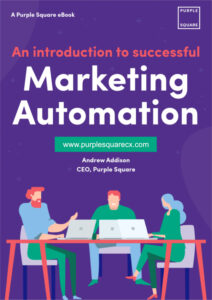What does good Campaign Analysis look like?
So you have got the hang of sending out Marketing Campaigns, the fine art of delivering a sequence of activity designed to empower your customers to do what they want, and in doing so choose you over your competition. But what about afterwards, the post campaign analysis? The fight for share of wallet has never been fiercer, driving forward a never-ending arms race of marketing sophistication. For that I salute you, it’s no small feat to design, build and execute an effective marketing campaign, given the endless proliferation of data you can draw on for selection, coupled with the myriad possible messages you could send out to your customers.
The next most important, and surprisingly overlooked aspect to consider is, how are my campaigns doing? All too often, once one campaign is completed, the campaign team move straight on to the next one; another urgent priority from marketing, with a raft of accompanying meetings to fine-tune the requirements. The focus has shifted on to defining a new target audience, and the message to achieve the best possible result for your brand and specific business objectives.
I’m certain you have a reasonable understanding of how many customers you are reaching with your digital marketing, and probably how many of them are casting their eyes over your messages (via tracking clicks), perhaps even how many people are completing the conversion actions you ultimately desire. In the modern world of ever more connected technologies it’s often possible to track a customer’s behaviour relating to your brand every step of the way from the moment they might receive a message, to when they eventually complete the desired action (often to purchase your product or service).
There are many reasons why it is vitally important to analyse your campaign responses, but primarily among them:
- Ability to report back to the business the Return on Investment (ROI). That’s why we do it after all, so an understanding on the value your efforts bring in comes in very handy, especially should the significant investments in MarTech ever be called into question (or it’s time for pay reviews!)
- To measure the performance of individual segments within the campaign against each other (A/B testing) and against themselves via sample/control groups
- Improve the response rate for the next time you run the campaign – every campaign can be incrementally improved, and understanding which segments perform better than others is an integral part of that improvement
- In the event of any negative response for any unfortunate reason, you then have the ability to react quickly enough to withhold similar campaigns or segments from sending before further damage is done
- Some organisations have even automated elements of post campaign review for regular broadcasts, e.g. alerting for review if the open/click rates vary more than a given +/- % from an agreed average for a campaign.
For more information on Campaign Analysis best practices check out our eBook, An Introduction to Successful Marketing Automation.
Like what you see?
Subscribe to our newsletter for customer experience thought leadership and marketing tips and tricks.





